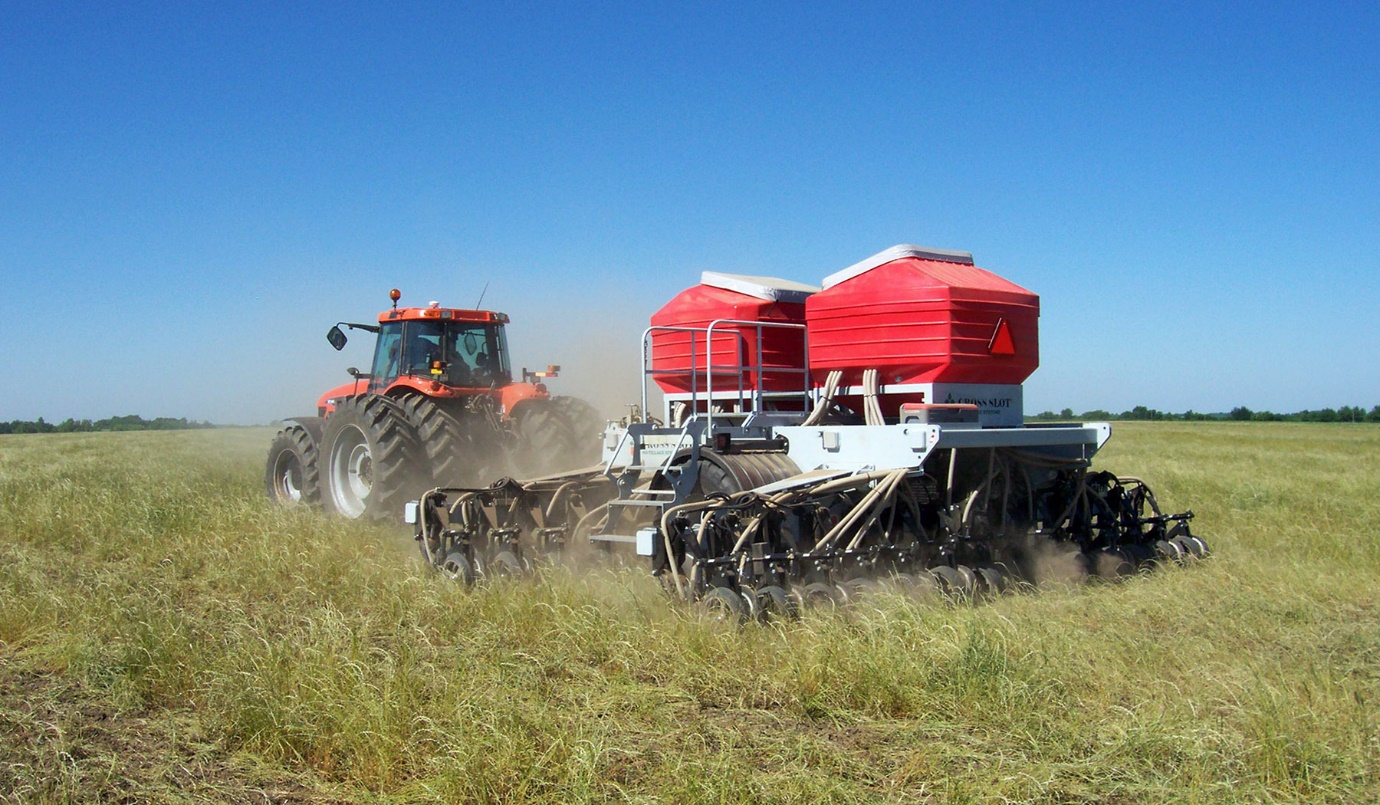Cultivation by zero or minimum till
What
No-till seeding is an agricultural technique for growing crops or pasture without disturbing the soil through tillage (ploughing). No-till seeding is intended to increase the amount of water that infiltrates into the soil, increase the soil\‘s retention of organic matter, and increase its cycling of nutrients.
Why
Ploughing or tillage dramatically erode soil and release large amounts of carbon dioxide into the atmosphere. They also can result in the kind of bare or compacted soil that can be damaging for important soil microbes. By adopting low or no-till practices, farmers minimize physical disturbance of the soil, and over time increase levels of soil organic matter creating healthier, more resilient environments for plants to thrive, as well as keeping more and more carbon where it belongs, in the soil. No till seeding leaves plant residues on the ground, which can help keep the soil moist and protect against evaporation caused by sun and wind. It also significantly reduces the risk of sediment runoff in wet weather events prior to the plants become established.
Because the soil is not agitated, the practice promotes biodiversity in and around the soil. Organisms flourish in an environment where there is no soil disturbance. Things such as mycorrhizal fungi which associate with crop roots, and earthworms which increase water retention in the soil are undisturbed.
No-till seeding also reduces carbon emissions from mechanical equipment and saves labour and fuel costs. Conventional tillage requires as many as five passes over land with a plough. No-till requires one — to plant the seeds.

Image Source: Pure Advantage
References
Lightfoot, C. (1990). Integration of aquaculture and agriculture: a route to sustainable farming systems. Naga, The ICLARM Quarterly, 13(1), 9-12.
LaCanne, C. E., & Lundgren, J. G. (2018). Regenerative agriculture: merging farming and natural resource conservation profitably. PeerJ, 6, e4428.
Smith, L. C., McDowell, R. W., & Cosgrove, G. P. (2016). A comparison of nutrient losses to waters following pasture renewal by cultivation or direct-drilling. Journal of New Zealand Grasslands, 93-98.
Toensmeier, E. (2016). The carbon farming solution: a global toolkit of perennial crops and regenerative agriculture practices for climate change mitigation and food security. Chelsea Green Publishing.